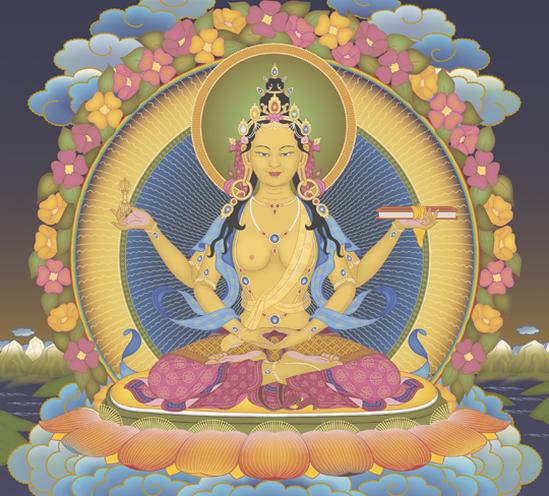Prajna is the mother of all the Buddhas of the past, present, and future. It points directly to the original mind by piercing through all the various worldly afflictions and suffering, such as the obstacles of language, knowledge, and ignorance.
Prajna directly grasps the great wisdom of all the Buddhas and has practical application in the present world. Prajna is truly life’s secret ingredient for success.
Prajna or Pragya is used to refer to the highest and purest form of wisdom, intelligence, and understanding. Pragya is the state of wisdom, which is higher than the knowledge obtained by reasoning and inference. Prajna is often translated as "wisdom," but according to Buddhism, it is closer in meaning to "insight," "non-discriminating knowledge," or "intuitive apprehension.".
Why is prajna the real heart of Buddhism? Introduction to the Heart Sutra Prajna means wisdom, paramita means perfection; accordingly, Prajna-paramita means "the perfection of wisdom." This sutra is more briefly named the Heart Sutra. It is called the "heart" in as much as it subsumes the essence of the Perfection of Wisdom of the Buddha.
What are the three types of prajna? The process of deepening our understanding is referred to as the three levels of prajna, or the three prajnas. These are called:
1) Hearing.
2) Contemplating.
3) Meditating.
1) The first stage of knowledge is 'goodwill.'
2) The second is termed 'discrimination.'
3) The third 'attenuated mind'.
4) The fourth stage is'self realization',
5) The fifth is named 'detachment',
6) The sixth is the 'objectless.'
7) The seventh is 'transcendent'.
Prajna is a Buddhist term often translated as "wisdom," "insight," "intelligence," or "understanding." It is described in Buddhist texts as the understanding of the true nature of phenomena.
There are three levels of wisdom in Buddhism:
1) Received wisdom is acquired through reading texts or listening to a teacher and understanding the knowledge that you've received well enough to remember it.
2) Intellectual wisdom. <
3) Experiential wisdom.
The three levels of understanding are, in Buddhism, three sequential points in which an understanding is gained on reality.
These levels of understanding are ways to gain an understanding of the three marks of existence, which in turn assist in understanding emptiness.
Buddhist training is threefold and split into the first training, Sila, which is about moral conduct; the second training, Samadhi, which is about meditation; and the third training, Panna or Prajna, which is about wisdom.
Donations for our Buddhist research and development.
Do you earnestly cherish our devoted work? Assuming this is the case, we are delighted that you are finding our blog useful and valuable. Would you consider making a donation for our Buddhist research and development?
We need your help to secure the future of scholarly interaction with Buddhism. Since our very first publication of Dharma works and activities in 2008, we have been effortlessly providing free distribution of Dharma posts and articles throughout the previous 16 years.
We have exceptionally constrained support and do not receive subsidies or funding from people in general.
Please help us develop our Dharma activities that will not only benefit you but all Dharma readers on the planet. Please consider showing your support. Your generosity will certainly help us enhance our work and accomplish more for a better and brighter future.
Thank you for reading. May you find peace and great bliss. With your support, it helps to spread the Buddha’s precious teachings and turn the Dharma wheels in the world.
Aspiration For Bodhichitta
For those in whom the precious Bodhichitta has not arisen
May it arise and not decrease.But increase further and further.
Dedication of Merit
By this merit, may we then obtain omniscience then.
Having defeated the enemies wrongdoings
May we liberate migratory from the ocean of existence.
With its stormy waves of birth, old age, sickness, and death.
*Note
I do not own or infringe any copyright on the picture(s).
Picture(s) courtesy and credit to the rightful distributors and/or studios
The picture(s) are intended for editorial use only.






No comments:
Post a Comment
Note: Only a member of this blog may post a comment.